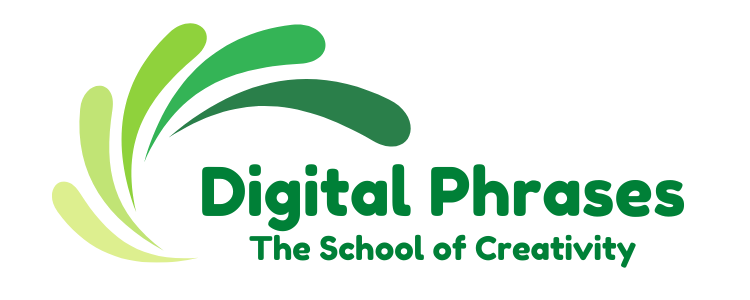How Can You Write Dialects Without Falling Into Stereotypes?
Writing dialect is one of the trickiest storytelling techniques out there. On one hand, it can instantly bring a character to life, ground them in a particular culture or place, and make your world feel real. On the other hand? It’s one of the fastest ways to lose reader trust if it comes across as lazy, inaccurate, or (worst of all) stereotypical.
Now, I know I’m talking to a room full of experts here—writers, editors, linguists, and folks who’ve probably read thousands of books where dialect either sings or crashes. But even at the top level, it’s worth rethinking how and why we use dialect—especially as standards for representation evolve fast.
A simple example: Mark Twain’s Huckleberry Finn is often praised for its use of dialect. But if you look closely, a lot of what was considered “authentic” in the 19th century reads today as flattened caricature—especially for Black characters. Compare that with how writers like Marlon James (A Brief History of Seven Killings) or Irvine Welsh (Trainspotting) use dialect: the linguistic texture is layered, the characters have agency, and their voices resist easy categorization. That difference matters.
So let’s dig in.
What Dialect Really Does in a Story
More Than Just “How People Talk”
Dialect isn’t about sprinkling in dropped G’s or funny spellings. It’s about worldview. The way someone speaks carries their history, community, education, relationships, and internal life.
When I read Their Eyes Were Watching God by Zora Neale Hurston, I wasn’t just hearing rural Black Southern dialect—I was feeling the emotional weight of Janie’s life, her relationships, her defiance. Hurston used rhythm, syntax, and cultural nuance, not cheap phonetic tricks.
Now think about the flip side: how often have we seen side characters reduced to comic relief through bad dialect writing? The “wise old Asian shopkeeper,” the “sassy Black friend,” the “salt-of-the-earth rural guy”—all familiar, all tired, all driven by stereotypes, not storytelling.
Good dialect reveals character. Bad dialect reveals the writer.
How To Write Dialect Without Falling Into Stereotypes
Before You Write
Know the culture first. I’m always shocked when I see writers mimic a dialect they barely understand. Listen to native speakers, yes—but also learn the history and why certain turns of phrase exist. Caribbean English, African American Vernacular English (AAVE), Geordie, Appalachian English—these dialects all carry centuries of cultural weight. If you don’t get that, you won’t write them well.
Talk to people. Not just linguists—community members, elders, younger speakers, folks outside the literary world. Dialect is living.
Hire sensitivity readers. Yes, even if you think you’ve done your homework. Especially if you think you’ve done your homework.
While You Write
Less is more. You don’t need to spell out every accent. Trust me—readers are smart. A few strategic choices in syntax, rhythm, and word choice go much further than writing “Ah’s gwine ter the sto’” for an entire chapter.
Focus on syntax and idiom. How do speakers structure sentences? What metaphors or cultural references do they use? Irvine Welsh’s Trainspotting works because the Scottish dialect is embedded in the characters’ thought patterns and worldview, not just how they pronounce words.
Balance dialect with clarity. If your reader has to sound out every line phonetically, you’ve probably gone too far. Remember: you’re telling a story, not transcribing audio.
After You Write
Look for unintentional stereotypes. Did you accidentally lean on tropes? Does your dialect choice turn your character into a stock figure? I once saw a well-meaning author render all Black dialogue in thick phonetic slang—while all the white characters spoke standard English. That’s not authenticity; that’s bias showing.
Check with multiple readers. Not just one trusted voice. Different readers will pick up on different signals—especially from communities you’re trying to represent.
Ask yourself: does this serve character and story? Or are you just showing off how much dialect research you’ve done? The best dialect use is invisible—it makes us feel we know the character more deeply, not that we’re reading a linguistic performance.
Real-World Examples: When It Works, When It Doesn’t
Let’s get specific.
Marlon James in A Brief History of Seven Killings—pure brilliance. He juggles multiple Jamaican dialects without exoticizing them. Characters sound different from each other because they are different—by class, age, politics, and neighborhood. You feel immersed, not patronized.
Zora Neale Hurston in Their Eyes Were Watching God—a masterclass in voice-driven narrative. The dialect draws you into Janie’s interior world while respecting her dignity and agency.
Now contrast that with some of the early 20th-century pulp fiction I’ve analyzed: Chinese characters speaking “Ching-chong” nonsense syllables, Irish cops going “Begorrah!” every sentence, Black characters reduced to minstrel show caricatures. The intent may not have been malicious, but the result is clear: those dialects serve to flatten and “other” characters, not enrich them.
Even today, I see this problem in contemporary genre fiction: the “funny” sidekick with quirky dialect that never evolves, or the token regional accent that signals “rustic wisdom.” These are traps we have to avoid—especially because readers today are more dialect-aware than ever.
Bottom line?
Dialect isn’t a trick. It’s a responsibility. Get it right, and your story gains depth and authenticity. Get it wrong, and you’re doing harm. That’s why this matters—and why we need to keep learning, even as experts.
How To Write Dialect Without Falling Into Stereotypes
Before You Write
If I had to pick one place where most writers go wrong with dialect, it’s right here: they dive in too fast. Dialect is alluring—you hear a rich turn of phrase or a quirky accent and you want to put it on the page immediately. But without deep cultural context, you’re likely to fall into mimicry, not authentic representation.
So slow down. Do your research. And no, I don’t mean scrolling YouTube for funny accent videos. I mean immersive research. Read oral histories. Study linguistic scholarship. Listen to long-form interviews with speakers from that community, ideally across different generations.
For example: Caribbean English is often butchered in fiction because people conflate all the islands, or assume Patois equals “broken English.” In reality, Jamaican Patois is a full-fledged creole with rich history, and Trinidadian English is a completely different beast—melodic, quick, full of French and Hindi loanwords. If you treat them as interchangeable, you’re already failing.
Talk to people. Not just linguists or academics—though they’re valuable—but everyday speakers. What’s changing in the dialect? What’s falling out of fashion? What’s loaded with cultural weight, and what’s casual?
For example: in modern African American Vernacular English (AAVE), “on period” is a youth-driven intensifier that wouldn’t make sense in an older character’s voice. You wouldn’t have a grandmother in 1970s Harlem say it—but I’ve seen it done in more than one contemporary novel by well-meaning white writers trying to sound current. Oof.
Hire sensitivity readers. I can’t say this enough. You can do all the research in the world and still have blind spots. That’s okay—if you ask for help. Sensitivity readers aren’t about political correctness; they’re about protecting your story’s credibility and your own integrity as a writer. I’ve used them many times, even for dialects I thought I understood deeply. They always catch things I didn’t.
While You Write
Less is more. I’ve seen too many manuscripts drown in phonetic spelling. The reader shouldn’t need a decoder ring to get through your dialogue. What works far better is to suggest dialect through rhythm, syntax, idiomatic expressions, and occasional phonetic hints—not to try to replicate every sound exactly.
Look at how Colum McCann handles Irish dialect in Let the Great World Spin: he doesn’t write out the accent in eye-dialect. He lets the cadence, the slang, and the worldview do the work. That’s sophisticated writing.
Prioritize syntax and idiom over phonetic spelling. One of my favorite examples is in Nalo Hopkinson’s Midnight Robber, where Caribbean-inflected English permeates not just the dialogue but the narrative voice itself. It’s not about dropping R’s or writing “dem” for “them”—it’s about the structure of the sentences, the metaphorical language, and the cultural references that shape how the characters think and speak.
Balance dialect with clarity. If your reader stumbles over every line of dialogue, you’ve failed—not because readers are dumb, but because they’re trying to read a story, not attend a linguistics seminar. Again, look at masters like Hurston or James: they guide the reader in gently, building fluency over time, so by the time the reader is deep in the story, the dialect feels like music, not static.
After You Write
Check for unintentional stereotypes. This is the hardest part because it requires brutal honesty. You might think you’re writing a “colorful” or “authentic” character—but if you’ve unconsciously leaned on tropes (the sassy Black friend, the dumb hick, the inscrutable Asian elder), you’re in dangerous territory.
One simple test I use: if I stripped out the dialect, would this character still feel complex and real? If not, I’m probably leaning too hard on the dialect as a crutch.
Use multiple readers. One sensitivity reader is good; two is better. Also, ask trusted readers from outside the dialect community—how does it read to them? Are they picking up signals you didn’t intend?
Always ask: is this dialect serving the story? At the end of the day, dialect is a tool, not a goal. If it isn’t helping you deepen character, enrich setting, or heighten conflict, you may want to use less of it—or none at all. I’ve cut entire dialect-inflected sections from my own work after realizing they were more about showing off than serving the narrative. It hurts, but it’s necessary.
When Dialect Works—and When It Doesn’t
Let’s get into some real-world examples, because this is where things get concrete.
Dialect That Works
Marlon James, A Brief History of Seven Killings
James juggles multiple Jamaican dialects with astonishing skill—slang, political speech, police jargon, street talk, Rastafari idiom—all rendered with precision and respect. The result? You don’t just hear the voices; you feel the characters’ lives, their tensions, their contradictions.
Importantly, James doesn’t overdo phonetic spelling. He trusts rhythm, syntax, and idiom to carry the dialect. And he shows how dialect shifts based on social context—how a character speaks to a friend vs. a cop vs. a rival gang member. That’s real dialect mastery.
Zora Neale Hurston, Their Eyes Were Watching God
Hurston’s use of Southern Black dialect is justly celebrated. But what’s often missed is how selective and purposeful she is. Janie’s interior monologue and the narrative prose are lyrical and fluid; it’s only in dialogue that the rich dialect surfaces.
This creates a beautiful tension: the reader gets both the inner life of the character and the social voice of her community. And again, Hurston avoids minstrel-show exaggeration; she writes dialect with love and insight.
Irvine Welsh, Trainspotting
Welsh uses heavy Scots dialect—but he does so in a way that builds reader fluency over time. At first, you stumble. Then you start hearing the voice. Then you’re immersed. Crucially, Welsh’s characters are not defined by their dialect alone. They’re complex, flawed, human. The dialect is an integral part of that humanity, not a gimmick.
Dialect That Doesn’t Work
Early 20th-century pulp fiction
You don’t have to look far to find examples: Chinese characters speaking “Ah so!” gibberish, Black characters reduced to eye-dialect “sho’ nuff!” stereotypes, Irish cops shouting “Begorrah!” These aren’t just dated—they’re offensive and flattening.
What’s the common thread? In all these cases, dialect is used not to deepen character but to other them—to mark them as comic, exotic, or less intelligent than the “standard” English-speaking characters.
Contemporary genre fiction clichés
Sadly, we still see versions of this today. The “funny” sidekick with quirky dialect who never evolves. The token rural character whose speech is all dropped G’s and folksy clichés. The urban Black character written entirely in outdated hip-hop slang.
These characters often have no inner life beyond the dialect—and that’s a dead giveaway of bad writing. If the dialect is doing all the heavy lifting, your character isn’t fully built.
The Takeaway
Dialect works when it reveals depth. It fails when it flattens or mocks.
Good dialect invites readers in. Bad dialect pushes them away—or worse, invites them to laugh at characters rather than understand them.
Good dialect is flexible. It shifts based on context, audience, and emotional state. Bad dialect is static and one-note.
If you can keep those principles in mind, you’re already ahead of the game.
Before You Leave…
If you’ve read this far, you already know how tricky—and how powerful—dialect can be as a storytelling technique. You also know that getting it wrong doesn’t just make your writing weaker; it can do real harm.
But here’s the exciting part: when you take the time to do it well, dialect can make your story sing. It can bring worlds to life, deepen character, and give your readers an experience they won’t forget.
So go ahead—experiment. Listen deeply. Write bravely. And always, always ask: am I honoring this voice, or using it?
That’s the line that separates great storytelling from stereotype. And I know you can walk it.






